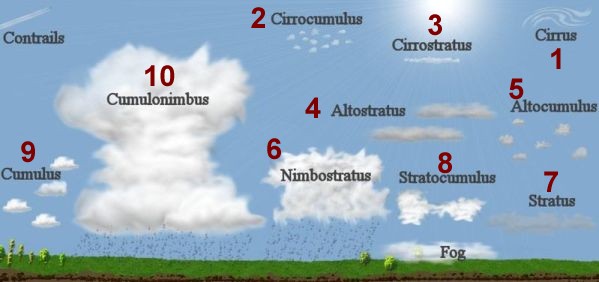|
We see clouds nearly everyday. They float in the sky above us and block out the Sun. Sometimes clouds are white and puffy. Sometimes they are dark and cover the entire sky. Different kinds of clouds can mean different kinds of weather. Meteorologists study the formation and make up of clouds to understand the weather better.
What are clouds made of? Clouds are made up of tiny droplets or frozen crystals of water. |
 |
